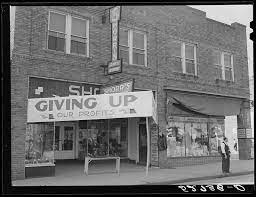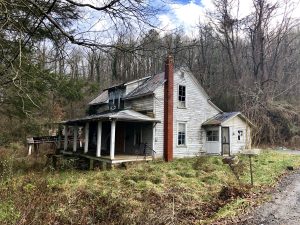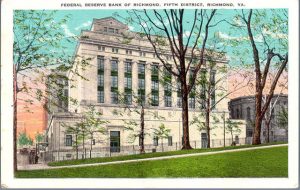|
|
You Can Take It to the Bank: Federal Reserve System Resources for CED ProfessionalsBy Maureen BernerPublished October 19, 2023
We are awash in data on CED issues from annexation to zoning. What NC CED professionals need, however, is valid data based in reliable research, appropriate for their current questions, and relevant and applicable to North Carolina. This post outlines how NC CED practitioners can access this kind of data from the Federal Reserve Bank system, with particular focus on the resources of the Federal Reserve Banks located in Richmond and Atlanta. These two Banks are diving into issues such as housing affordability and the rural/urban divide in the Southeastern U.S. with localized data and analysis and have valuable information NC CED professionals can use. 

Fed Communities also has an associated webinar series called Connecting Communities. The benefit of the series is that it is engaging, relatively short (60 minutes with at least half of the time devoted to questions and answers), free, archived, and often feature both national CED experts and local CED and related government officials. A potential caution for NC CED practitioners when considering examples used in the series, however, is that the circumstances and legal context of some of the webinars from other parts of the country may be different than the situation you see in your area of North Carolina.  The 5th and 6th Districts’ headquarters are located in Richmond (with a branch office in Charlotte, N.C.) and Atlanta respectively, and their data, research, and analysis are particularly relevant to the issues facing NC CED professionals. For example, the Federal Reserve Bank of Richmond provides a monthly survey of business activity across the Carolinas, and separately service and manufacturing activity across the entire 5th District. This is the type of standard economic data you may expect from a regional Federal Reserve Bank, but perspectives about the role of the Bank in community and economic development, broadly speaking, may be changing. For example, to address workforce development issues, the Richmond Fed is piloting a community college outcomes survey, with two North Carolina schools currently participating. Some of the motivation for the survey appears to be a push for innovative ways to measure success of community colleges in building a local workforce. The researchers are seeking more community colleges to participate, with the goal of full participation across the entire Richmond Fed area (interested institutions can sign up here). 
|
Published October 19, 2023 By Maureen Berner

We are awash in data on CED issues from annexation to zoning. What NC CED professionals need, however, is valid data based in reliable research, appropriate for their current questions, and relevant and applicable to North Carolina. This post outlines how NC CED practitioners can access this kind of data from the Federal Reserve Bank system, with particular focus on the resources of the Federal Reserve Banks located in Richmond and Atlanta. These two Banks are diving into issues such as housing affordability and the rural/urban divide in the Southeastern U.S. with localized data and analysis and have valuable information NC CED professionals can use.
Background on CED work within the U.S. Federal Reserve System
The U.S. Federal Reserve System was signed into law in 1913 by President Woodrow Wilson. It is not just a single central bank as is found in many other countries, but instead is made up of three entities: the Board of Governors, 12 individual Federal Reserve Banks, and the Federal Open Market Committee. Together, they work to promote the effective operation of the U.S. economy and the overall public interest. Beyond its many financial and economic responsibilities, one of the stated key functions of the system is to promote community development through the regional Federal Reserve Banks.

The 12 Federal Reserve Banks represent different geographic districts. North Carolina is included in the 5th District, along with South Carolina, Virginia, West Virginia, Maryland, and Washington, D.C. To the south, the 6th Federal Reserve District includes Alabama, Florida, and Georgia, and portions of Louisiana, Mississippi, and Tennessee. Each district has a dedicated community development staff who “work collaboratively to engage stakeholders; to understand issues and challenges in low- and moderate-income communities; and to provide research, policy insights, and technical assistance to support community and economic development programs (The Fed Explained, p. 126)”.
In 2020, the Federal Reserve System established a small, cross-cutting CED group within the Cleveland Federal Reserve Bank called Fed Communities, with the mission to help connect audiences of CED professionals with the Federal Reserve Bank system’s work—research, data, tools, and expertise—on economic challenges facing lower-income and under-served areas. In addition to many other services, Fed Communities offers a series of 22 CED tools with national/state and often local data relevant to NC CED practitioners—on community attributes as diverse as consumer credit (developed by the New York Fed), number and type of anchor organizations in a community (developed by the Philadelphia Fed), opportunity occupations (developed by the Atlanta Fed), and peer city identification (developed by the Chicago Fed).

Fed Communities also has an associated webinar series called Connecting Communities. The benefit of the series is that it is engaging, relatively short (60 minutes with at least half of the time devoted to questions and answers), free, archived, and often feature both national CED experts and local CED and related government officials. A potential caution for NC CED practitioners when considering examples used in the series, however, is that the circumstances and legal context of some of the webinars from other parts of the country may be different than the situation you see in your area of North Carolina.
Examples of Federal Reserve Data and Analysis Specific to NC Issues: Community College Success and Home Repairs…? Yes, Community College Success and Home Repairs

The 5th and 6th Districts’ headquarters are located in Richmond (with a branch office in Charlotte, N.C.) and Atlanta respectively, and their data, research, and analysis are particularly relevant to the issues facing NC CED professionals. For example, the Federal Reserve Bank of Richmond provides a monthly survey of business activity across the Carolinas, and separately service and manufacturing activity across the entire 5th District. This is the type of standard economic data you may expect from a regional Federal Reserve Bank, but perspectives about the role of the Bank in community and economic development, broadly speaking, may be changing. For example, to address workforce development issues, the Richmond Fed is piloting a community college outcomes survey, with two North Carolina schools currently participating. Some of the motivation for the survey appears to be a push for innovative ways to measure success of community colleges in building a local workforce. The researchers are seeking more community colleges to participate, with the goal of full participation across the entire Richmond Fed area (interested institutions can sign up here).
The District model allows each Federal Reserve Bank to focus on regional issues, allowing for more relevant, applicable data and analysis. Concerns about affordable housing provide a wonderful example. The Richmond Fed features blog posts under the subject of Regional Matters, which recently reported on an analysis on housing affordability for Low to Moderate Income (LMI) household renters and homeowners in rural areas. This particular blog series is valuable because it not only provides an overview of the issue as of early September (“Housing Affordability Challenges for Renters and Homeowners in the Rural Fifth District”), but links to related prior blogs (from July, 2023 – “Nonmetro Homeownership Affordability in Decline: Home Price Growth Outpaces Income in the Fifth District”) and, perhaps of more value to CED professionals wishing to dive into the raw data at the metro/county level, to the Home Ownership Affordability Monitor Index, maintained by the Atlanta Fed office.

In another example of being innovative and focused on regional issues rather than staying within traditional national economic analyses, Regional Matters expanded on its work on rural housing affordability issues in the rural southeast with its latest analysis of housing quality, “From Good Bones to Healthy Homes: Housing Quality in the Rural Fifth District,” bringing in data about different types of housing, such as manufactured homes, alongside data on repair needs and costs. These types of innovative convergences of traditional economic data and cross-cutting current issues are popping up across the analyses provided by entire Federal Reserve Bank system. The next one of note: the third and final research seminar of this year offered by national Fed Communities project, on November 13, 2023, is “Renting, Owning, and Implications for the Racial Wealth Gap.”
Author(s)
Tagged Under
This blog post is published and posted online by the School of Government to address issues of interest to government officials. This blog post is for educational and informational Copyright ©️ 2009 to present School of Government at the University of North Carolina. All rights reserved. use and may be used for those purposes without permission by providing acknowledgment of its source. Use of this blog post for commercial purposes is prohibited. To browse a complete catalog of School of Government publications, please visit the School’s website at www.sog.unc.edu or contact the Bookstore, School of Government, CB# 3330 Knapp-Sanders Building, UNC Chapel Hill, Chapel Hill, NC 27599-3330; e-mail sales@sog.unc.edu; telephone 919.966.4119; or fax 919.962.2707.

